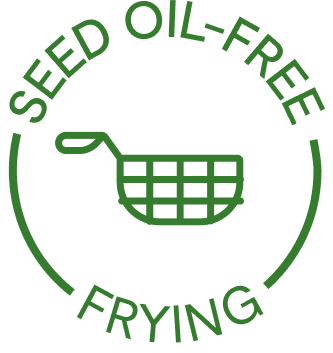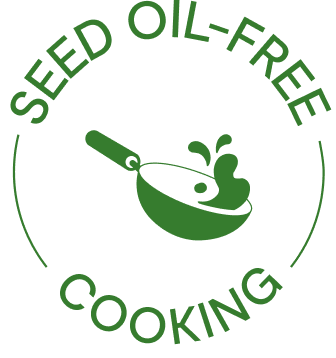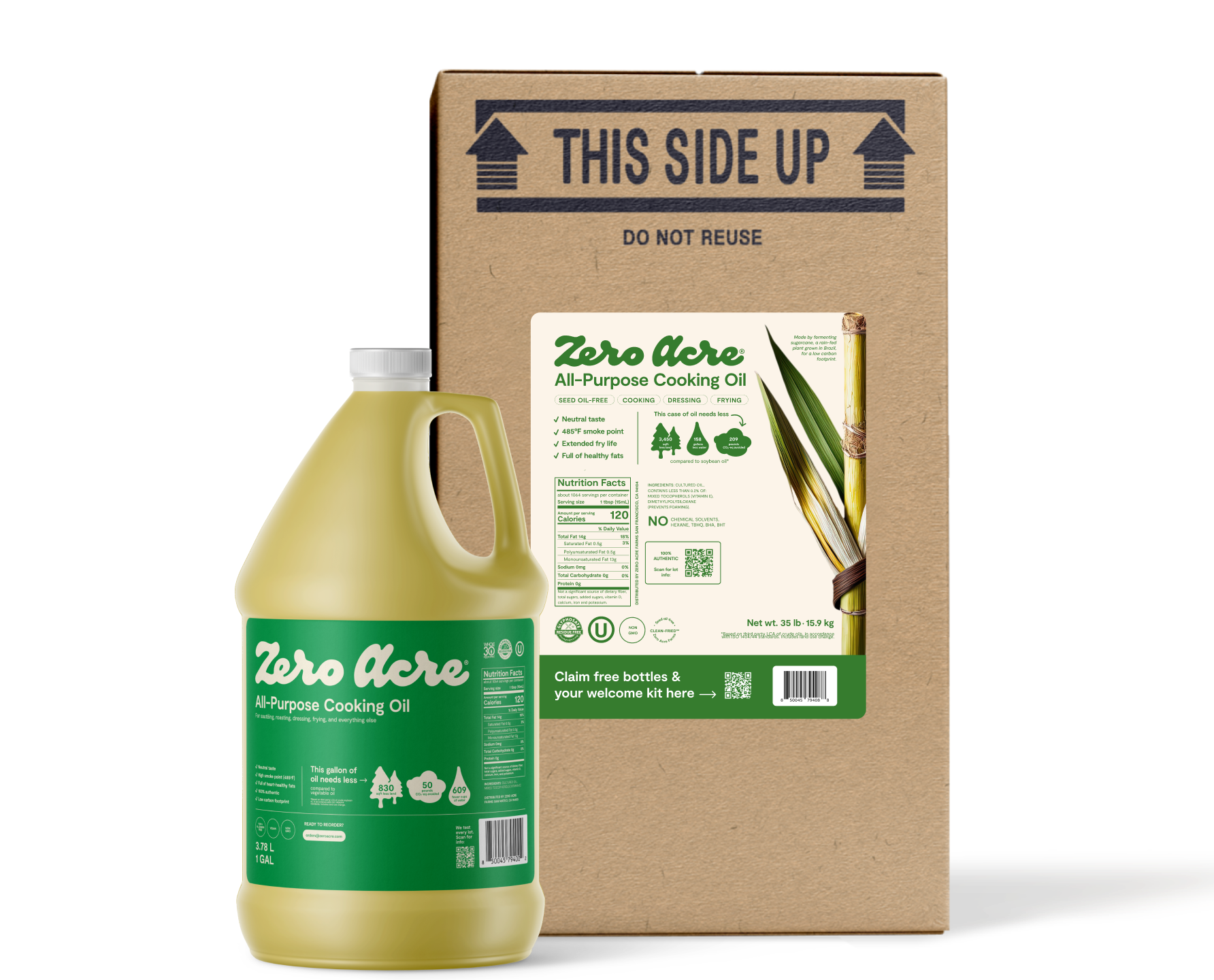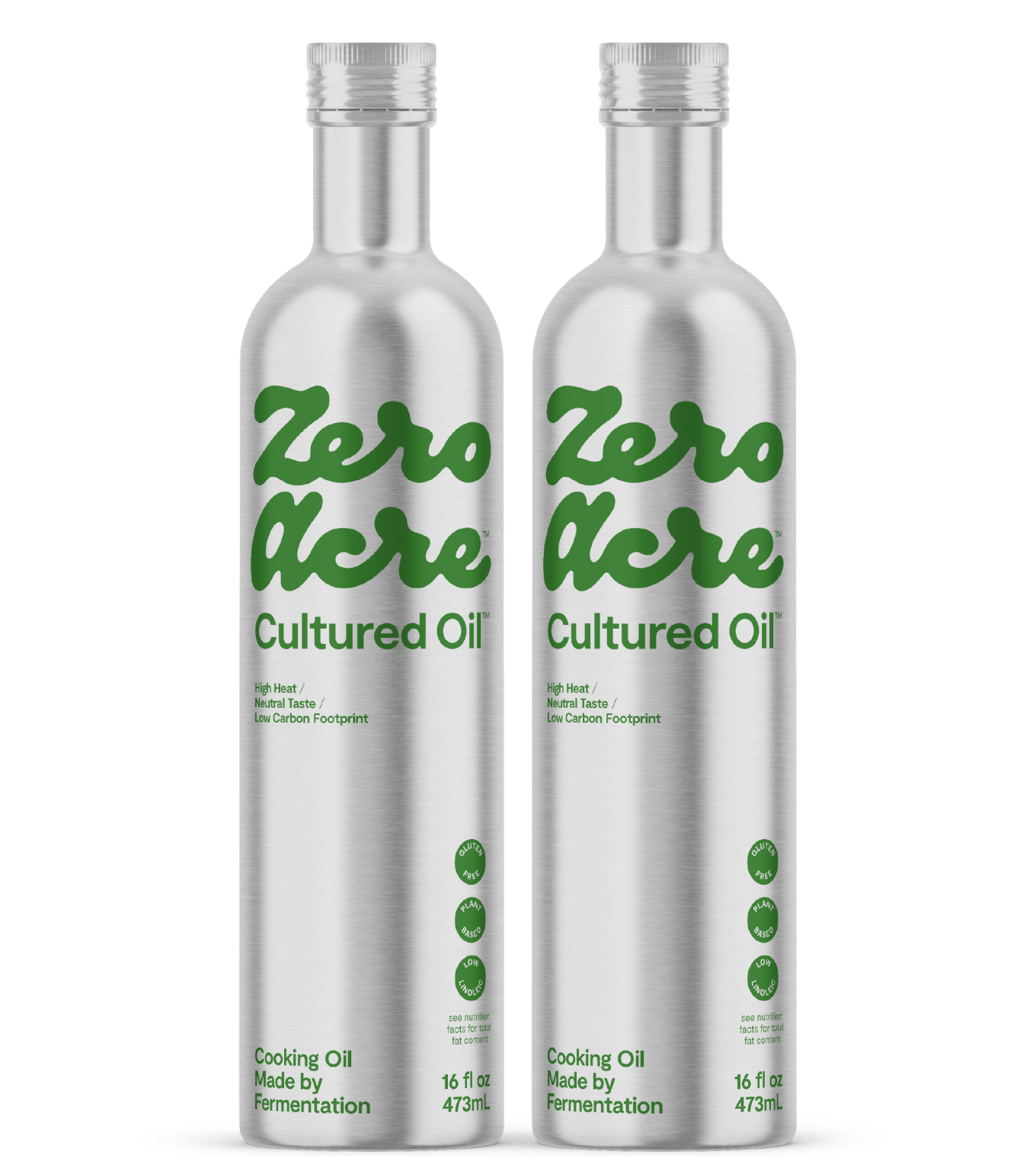WRITTEN BY: Corey Nelson
Article at a Glance
Vegetable oils are harmful to your health and the environment. They’re also often rancid and can have a stale flavor.
The easiest one-to-one substitutes for vegetable oils are olive oil, avocado oil, and coconut oil. Each has its trade-offs depending on your recipe needs, and all have some health and environmental downfalls to keep in mind.
Other ingredients like fruit purees, buttermilk, Greek yogurt, or cornstarch can also work in a pinch.
Sauces, marinades, and dressings are the most forgiving when it comes to vegetable oil substitutions, while baking and high-heat cooking require more trial and error.
Introduction
Vegetable oils are incredibly common in most recipes today. You can find vegetable oils like soy oil, sunflower oil, and canola oil in everything from salad dressings to baked goods, but there’s a catch — they’re terrible for your health and the environment.
Luckily, replacing vegetable oils with healthier alternatives is easy. Whether you want a vegetable oil substitute that’s better for your health, or you’re in a pinch and need a convenient ingredient swap for a recipe you’re planning to cook, we’ve got you covered.
First, we’ll take a quick look at the problems with vegetable oil, taking into account several health, sustainability, and culinary issues.
The Problems with Vegetable Oils
While “vegetable oils” might sound like wholesome, healthy ingredients, most of them are actually made from seed crops and refined through complicated industrial processes involving high pressure, heat, and solvent chemicals:
Canola (rapeseed) oil
Corn oil
Cottonseed oil
Grapeseed oil
Peanut oil
Rice bran oil
Safflower oil
Soybean oil
Sunflower oil
You might be surprised to learn that these common, highly refined fats don’t have a long track record of usage. Most of the oils listed above were only introduced in their current, refined form within the last century.
And with these new, inexpensive, and widely available ingredients, global production of vegetable oils has skyrocketed, increasing over 1600% in the past hundred years [*,*]. In the United States, the consumption of soybean oil alone has grown 1,000-fold since 1909 [*].

Health Concerns
Some early, flawed 20th-century studies suggested that vegetable oils were “heart-healthy,” but experimental and clinical evidence shows they’re unsafe and even meet the scientific definition of toxicity.
Compared to most dietary fats and cooking oils, vegetable oils are very high in linoleic acid, an omega-6 fat shown to increase inflammation [*].
The other problem with vegetable oils is that they’re very unstable and oxidize — or break down easily — during manufacturing, transport, storage, cooking, and even in your body after you consume them [*,*,*,*,*].
And evidence suggests the byproducts of oxidized omega-6 fats are even more inflammatory and harmful than the fats themselves [*].
Studies link vegetable oil and seed oil consumption to heart disease, neurological issues, cancer, and even weight gain and obesity [*].
Sustainability Issues
The low production cost of vegetable oils makes them appear economical, but they’re actually one of the most inefficient crops when it comes to land use.

In other words, the amount of land used to produce a kilogram of vegetable oil from soybeans, rapeseeds, or sunflowers could instead produce 30 to 50 times more real vegetables by weight, such as spinach, sweet potatoes, or carrots — which have far more nutritional value [*].
As a result, vegetable oil crops are some of the biggest crop drivers of deforestation and greenhouse gas emissions today [*,*,*].
Culinary Downsides
Vegetable oils also have their share of disadvantages from a culinary perspective.
Omega-6 oils are inherently unstable and oxidize easily. When stored or used for cooking, even below the “smoke point,” they break down into other compounds that are unhealthy [*]. The instability and oxidation of vegetable oils can also give them a rancid or bland taste.
You might not notice it if you’re eating processed pre-packaged foods, but if you’re cooking a tasty recipe at home, there’s a good chance you’ll find that food cooked with vegetable oils has an underlying stale flavor, whereas healthier vegetable oil substitutes can impart a fresher taste.

What Are the Uses of Vegetable Oil in Food and Cooking?
Vegetable oil usually refers to “all-purpose” cooking oils derived from crops that can be used for sauteing, frying, baking, and braising. They’re also used in dressings, sauces, marinades, and other oil-based mixtures.
Cooking oils serve all kinds of culinary purposes:
Preventing foods from sticking and burning during heating and cooking.
Their liquid nature helps other ingredients mix (in batters, for example) or lends a smooth, silky texture (like in salad dressings).
Fats can help create a tender, crispy, or chewy texture during cooking.
At high temperatures, oils help create buttery, sweet, nutty, and toasty flavors through caramelization.
Oils in recipes help to balance and blend the flavors of other ingredients.
Adding fats to some foods can help stabilize them and increase their shelf life.
Finally, vegetable oils also serve as an inexpensive source of calories in processed foods and some recipes.

How to Choose the Best Vegetable Oil Substitute
Substituting other ingredients in place of vegetable oils in your recipes isn’t difficult at all.
If you’re replacing them to make your meals healthier and tastier, you’ll want to make sure your alternative ingredients:
Are low in the inflammatory omega-6 polyunsaturated fatty acid (PUFA) linoleic acid (see the infographic below for an idea of which oils to avoid because they’re high in this fatty acid).
Contain stable fatty acids that don’t oxidize easily — which is also mainly about avoiding omega-6 linoleic acid and other PUFAs.
Have a smoke point that’s appropriate for what you’re doing in the kitchen. Low smoke point oils are fine for dressings but you’ll need a higher smoke point oil for high temperature cooking and frying.
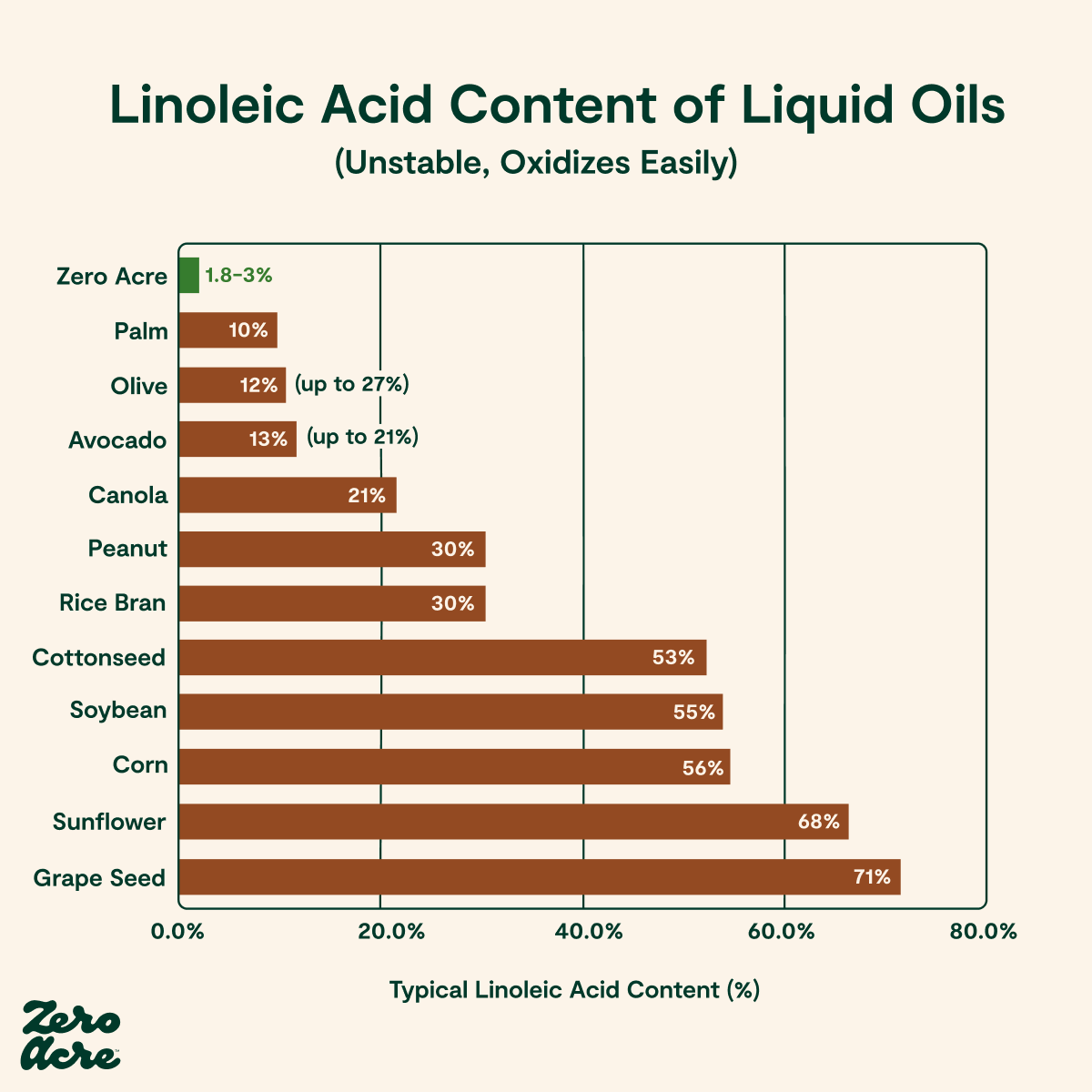
And in the practical sense of recipes turning out correctly, you need to choose a vegetable oil substitute that’s appropriate for that recipe.
In other words, applesauce or Greek yogurt can be great substitutes to help add texture and moisture, but they’re not going to work as an oil replacement in a salad dressing.
Oil-Based Substitutes For Vegetable Oil
In some recipes, like salad dressings, marinades, and sauces, you need a certain amount of oil to help the other ingredients mix and provide a smooth texture. Those recipes just won’t turn out as well with a non-oil substitute.
All of the oils below can be substituted one-to-one (meaning that if your recipe calls for a tablespoon of vegetable oil, replace it with a tablespoon of the oil of your choice).
Zero Acre Oil
Zero Acre oil is a neutral-tasting cooking oil that's high in heart-healthy and heat-stable monounsaturated fat. It has a sky-high smoke point of up to 485°F and also has one of the lowest linoleic acid levels on the market — less than 3%.
Unlike other cooking oils, you can use it for everything from salad dressings (that won't clump in the fridge) to sauteing and deep frying (because of its high smoke point and oxidative stability).
Made by fermentation, Zero Acre oil uses 85% less land than canola oil, emits 86% less CO2 than soybean oil, and requires 99% less water than olive oil, making it the natural choice when it comes to sustainability.
Avocado Oil
The Pros
Avocado oil isn’t completely neutral-tasting, but it’s less bold than olive oil. It tastes something like a mild avocado, with grassy and nutty notes that don’t stand out as much when blended with other ingredients.
Like olive oil, avocado oil is high in monounsaturated fat and contains moderate amounts of linoleic acid, making it a better option than high-linoleic vegetable oil [*]. It’s also liquid at room temperature, but is likely to clump in the fridge.
It’s got a high smoke point of 428-482°F or more, which means you can use it for nearly any application, even high heat cooking [*].
The Cons
Avocado oil production is largely driven by unjust labor practices and managed by cartels, which seize farms and clear protected forests to harvest avocados, also known as “green gold” [*].
Every day, about 9.5 billion liters (roughly 3,800 Olympic pools) of water are used in avocado production, most of which is extracted from aquifers [*]. Additionally, avocado production has caused biodiversity loss, soil degradation, and even extreme weather conditions [*].
Coconut Oil
The Pros
Coconut oil is solid at room temperature but liquefies around 78°F. Because of the fatty acid composition of coconut oil, it can add a crisp texture and rich mouthfeel to recipes.
Virgin coconut oil has a smoke point of 340-380°F and a sweet, nutty flavor, while refined coconut oil has a smoke point of up to 406°F and a relatively neutral taste [*,*], though even refined coconut oil can leave a mild “coconut” taste.
The high melting point of coconut oil is attributable to its high saturated fat content, which also makes it lower in harmful linoleic acid.
The Cons
Unfortunately, coconut oil grows in the same regions as palm oil (palm oil production being a major cause of deforestation) and there’s currently a debate over whether or not coconut oil is environmentally friendly or, like palm oil, drives excessive deforestation [*].
Evidence also suggests that coconut oil production threatens more species per kilogram of oil produced than any other oil crop [*].
Olive Oil
The Pros
Olive oil has a smooth texture and provides a peppery, astringent, “green,” and sometimes nutty flavor to recipes.
It’s high in monounsaturated fat and contains moderate amounts of linoleic acid, but still remains liquid at room temperature, making it a suitable vegetable oil replacement for dressings and sauces if you enjoy the taste [*].
The smoke point of olive oil is around 375°F, so it’s not suitable for high temperature applications like searing or sautéing [*]. While olive oil has a lower smoke point and is still prone to oxidation during cooking, it is less susceptible to oxidation than most other vegetable oils [*].
The Cons
Olive oil does tend to solidify under refrigeration, so you might need to bring your salad dressings up to room temperature before your next meal.
And, unfortunately, olive oil is one of the greediest oil crops in terms of its land use, requiring more land per kilogram than other common oil crops [*,*]. Olive oil also requires more water than any other oil [*]. Lastly, The New York Times reports that up to 69% of imported extra-virgin oil is diluted with other oils or doesn’t meet the taste and quality standards suggested by the label [*].
Other Substitutes For Vegetable Oil
If you’re experimenting with new recipes from scratch, looking for non-oil substitutes for vegetable oil, or simply don’t have other substitutes on hand, here are additional options that can work:
Applesauce is a low-calorie, vegan option to moisten and sweeten recipes. However, you may want to avoid applesauce if you’re on a low-sugar, or low-carb diet.
Fruit purees are another vegan option to add moisture and unique flavors to your favorite recipes. Bananas work well and are easy to puree by hand. But, again, fruit purees will add sugar to your recipes.
Butter adds a rich, creamy flavor but has a low smoke point (350°F) and is solid at room temperature due to its high saturated fat content.
Buttermilk is lower in fat than butter and can work to moisten and help ingredients mix in batters and similar recipes.
Cornstarch or cornstarch solution, made by adding 4 teaspoons of cornstarch per cup of water and boiling until thick, then cooling, can work as a one-to-one vegetable oil substitute.
Greek yogurt is a high-protein, tangy oil substitute that adds a creamy, thick texture to recipes.
With high-moisture ingredients like applesauce, buttermilk, and fruit purees, try starting with a 75% substitution instead of one-to-one. In other words, if your recipe calls for one cup of vegetable oil, try three-quarters of a cup of one of these replacements, then adjust as needed based on your results.
Every recipe is different, so it’s best to approach these substitutes (especially the non-oil options) with an experimental mindset. You may also find that mixing several different substitutes together works best for some recipes.
Vegetable Oil Substitutes for Baking
There’s some truth to the saying that “cooking is an art, but baking is a science.” In other words, while you can substitute ingredients during baking, doing so may change the entire recipe — for better or for worse.
Zero Acre oil is a one-to-one substitute for seed oils in baking and is neutral-tasting and low in inflammatory linoleic acid.
Olive oil, avocado oil, coconut oil, and butter tend to be lower in linoleic acid and are considered reliable substitutes for other seed oils. However, they all tend to have strong flavors that can outshine the ingredients in your baked goods.
Also, keep in mind that liquid fats tend to provide a chewy or soft mouthfeel, while solid fats like coconut oil will contribute a crumbly, flaky texture instead.
You can also use the non-oil substitutes applesauce, buttermilk, cornstarch solution, fruit purees, or Greek yogurt in baking.
Here’s what to keep in mind if you try a non-oil substitute:
Without added cooking oil, your baked goods may be more prone to burning, so check them regularly.
You may find decreasing the temperature by 25-50°F, reducing the baking time by 5 minutes or longer, or decreasing the temperature and lengthening the baking time works well.
A 75% substitution (such as substituting 3/4-cup of applesauce instead of a cup of vegetable oil) may work better than one-to-one. Try both ratios.
If you use a water-based alternative, you may also want to reduce added water in the recipe. For example, if you add a cup of buttermilk instead of a cup of oil, and the recipe also calls for a cup of water, you might reduce the water by 25%, using three-quarters of a cup of water instead.
And remember that you only get one chance per baked item, so consider making a smaller test batch before you go big with your modified recipe.
Vegetable Oil Substitutes For Dressings, Vinaigrettes, and Sauces
With dressings, vinaigrettes, sauces, marinades, and other concoctions, the main purposes of vegetable oil are to provide texture and to help unify the flavors of the other ingredients.
Unlike baking, it’s easy to perform a lot of low-stakes experimenting to figure out what works, and there are really no rules or guidelines. You can easily make several very small batches and modify until you find something you like.
The simplest direct replacements for vegetable oil are other oils, specifically Zero Acre oil, which has a neutral flavor and won't clump or solidify in the fridge. Olive oil and avocado oil are also good options but have a grassy or "green" flavor and will solidify when cooled.
Here are replacement options that aren’t oils but still contain fat to add texture and blend flavors:
Almond butter or other nut butters
Mayonnaise (preferably without seed oils)
Pureed avocado
Tahini (ground sesame paste)
These ingredients contain less or no fat but have interesting textures or other properties (such as being acidic, savory, salty, or sweet):
Juice (lemon, lime, apple, or other)
Miso (fermented soy paste)
Syrup (especially maple syrup or date syrup)
Vinegar (apple cider, balsamic, red wine, or white wine)
If you want to recreate a recipe as faithfully as possible, use one-to-one replacements (a tablespoon of your substitute in place of a tablespoon of vegetable oil, for example). That way, you’ll preserve the ratios of other ingredients.
But if you’re inventing your own recipe from scratch, you can try any substitution ratio you like.
Vegetable Oil Substitutes For Stir-Frying and Searing (High-Heat)
Cooking oils for high-heat cooking help foods cook evenly without burning.
They also create delightful textures and flavors by contributing to caramelization and melding fat-soluble compounds.
For this application, you really need a cooking oil that has a high smoke point:
Zero Acre oil boasts an ultra-high smoke point of 485°F and high oxidative stability, meaning it won't oxidize (or break down) at high temperatures.
Avocado oil’s smoke point is between 428-482°F, making it a top choice for high-heat cooking [*]
Ghee or clarified butter, a staple in Indian cuisine, has a smoke point of485°F
Refined coconut oil has a smoke point of approximately 450°F [*]
For comparison, most vegetable oils and vegetable oil blends have a smoke point around 400-430°F. They’re an extremely poor high-heat choice for both culinary and health reasons.

Pros and Cons of Vegetable Oil Substitutes
There can be no doubt that replacing vegetable oil with alternative options can improve the quality of your recipes and give you a health boost, but they’re not without their downsides. Here are the biggest tradeoffs to keep in mind.
The Pros
Fatty acid content: Compared to soybean oil and other oils sold as vegetable oils, most substitutes are lower in linoleic acid and other inflammatory omega-6 fats.
Stability: Most vegetable oil alternatives are less prone to oxidation (structural damage that causes harmful chemical byproducts) as long as you keep them below their smoke point ranges.
Taste: Vegetable oils and seed oils are easily oxidized, often giving them a stale or rancid taste, while high-quality substitutes taste fresh.
The Cons
Ease of use: Substituting other ingredients for vegetable oils can sometimes give unpredictable results, especially if you use non-oil options like yogurt, or if you’re baking.
Flavors: Most vegetable oil substitutes don’t have a neutral taste, so if you’re not careful, you might introduce unwelcome flavors into a recipe.
Smoke points: Some substitution options, like virgin coconut oil and extra virgin olive oil, have low smoke points, meaning they’re not suitable for high-heat cooking.
Price: Some vegetable oil substitutes cost more than vegetable oils. While not a huge cost, this consideration is especially significant for businesses like restaurants.
Authenticity and quality: Unfortunately, fraud and other quality issues exist with alternative cooking oils. For example, The New York Times reports that up to 69% of imported extra-virgin oil is diluted with other oils or doesn’t meet the taste and quality standards suggested by the label [*].
Environmental impacts: Cooking oils in general aren’t green or environmentally friendly. They’re grown using industrialized farming methods, which result in pollution, inefficient use of water, death of native species, habitat loss, deforestation, and more [*,*].
Sugar content: Baking substitutes like applesauce and fruit puree will add sugar content to your baked goods.
The Takeaway
Every cooking oil has its pros and cons, but there are plenty of options that are much healthier and more sustainable than vegetable oils. Zero Acre oil offers an array of culinary and health benefits, including a clean, neutral taste, a high smoke point, and high oxidative stability.
Whether you’re baking, making a dressing or sauce, or cooking with low or high heat, the most important thing you can do for your health is to avoid oils and fats that are high in inflammatory omega-6 linoleic acid.
So, if you’re looking for a vegetable oil substitute, it’s important to take into account the omega-6 linoleic acid content, stability, smoke point, flavor, texture, and other properties (such as how it works for baking) for the best (and healthiest) results.

The Ultimate Guide to Healthy Oils and Fats: 40+ Options Compared
Fats are an important source of energy in your diet. The key is to zero in on wholesome, nutritious fat sources that match your dietary needs and priorities.

Best Oils for Frying: Pros, Cons, Which to Avoid
Are fried foods inherently unhealthy? You can make fried foods healthier and tastier with these top best oils for frying.
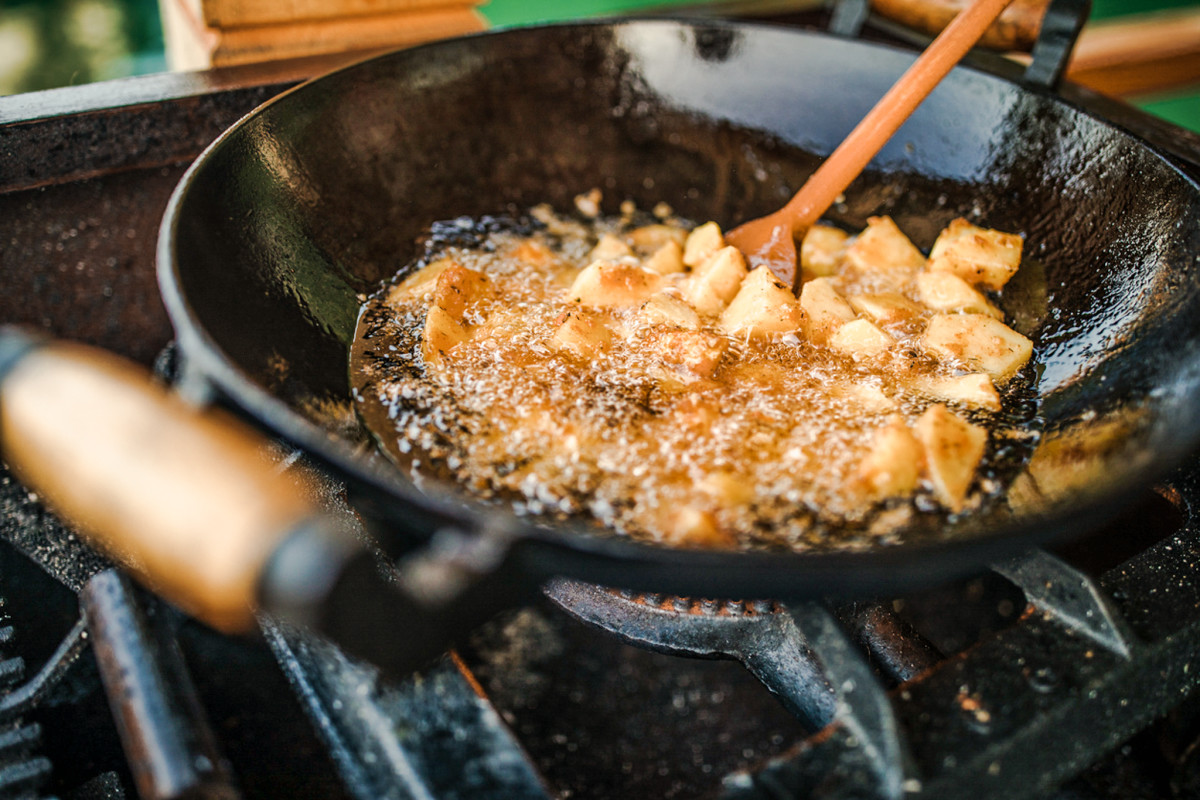
Are Seed Oils Toxic? The Latest Research Suggests Yes
Seed oils never underwent safety testing for premarket approval. Here, we examine the disturbing toxicity and safety data that have come to light recently.

